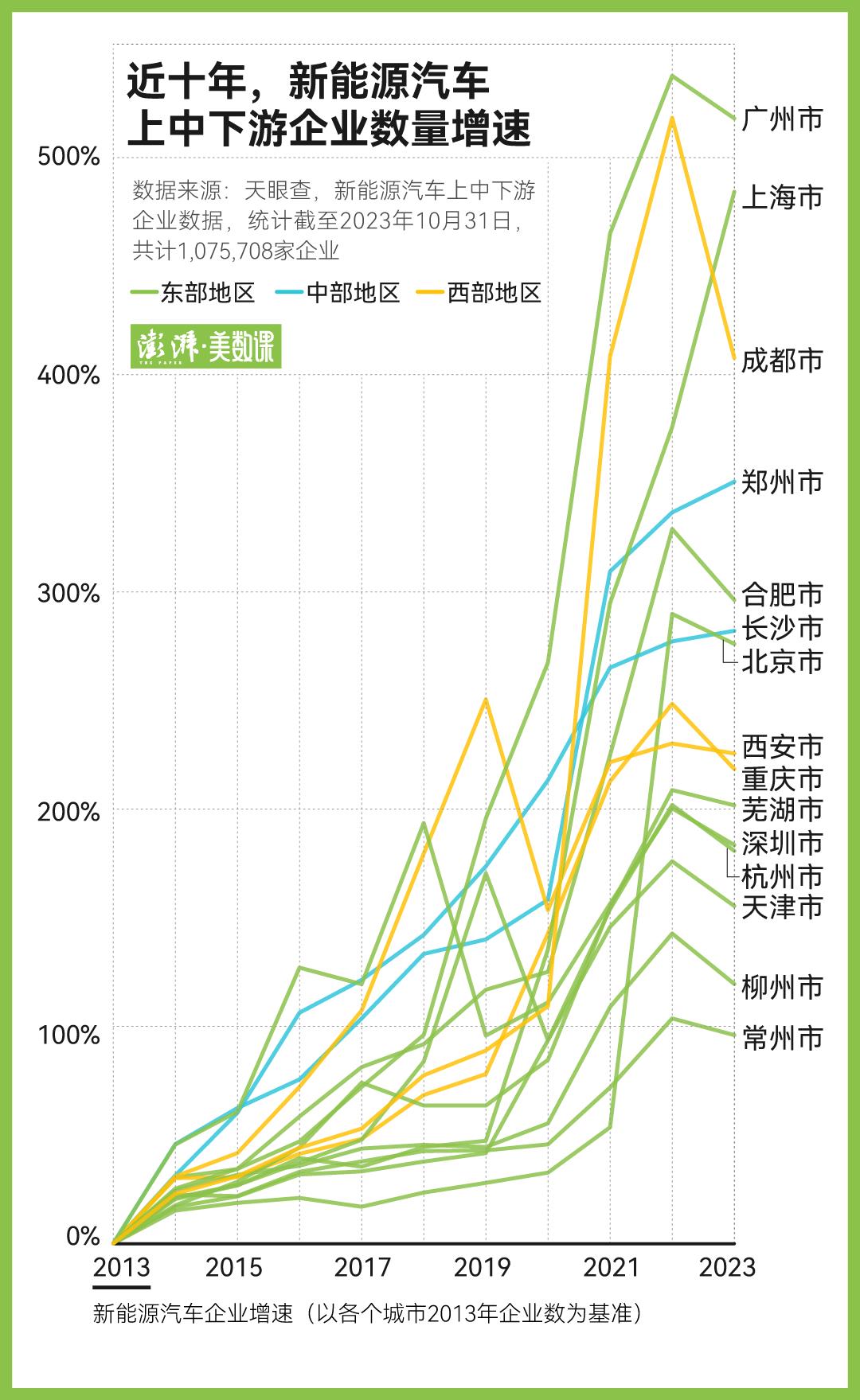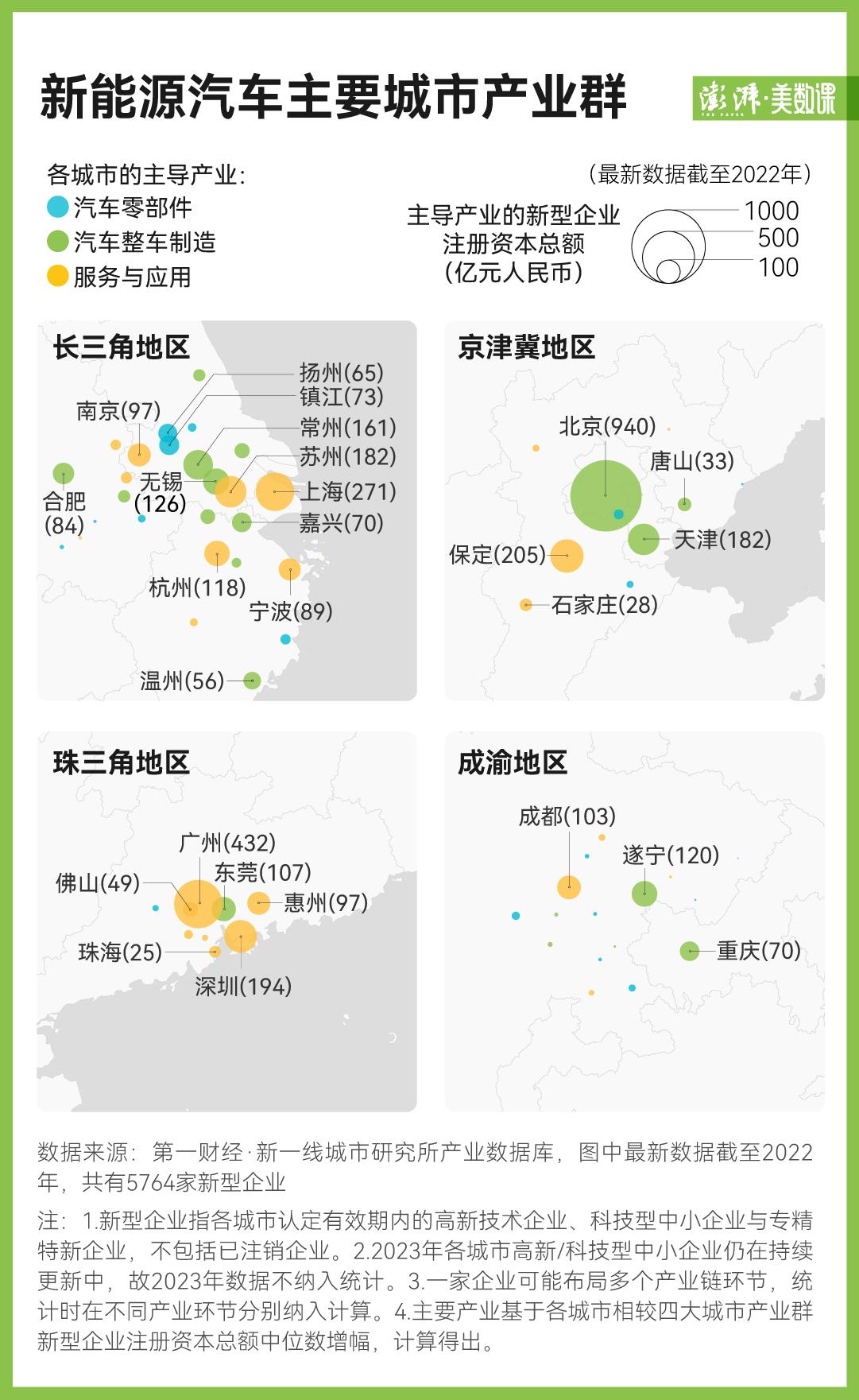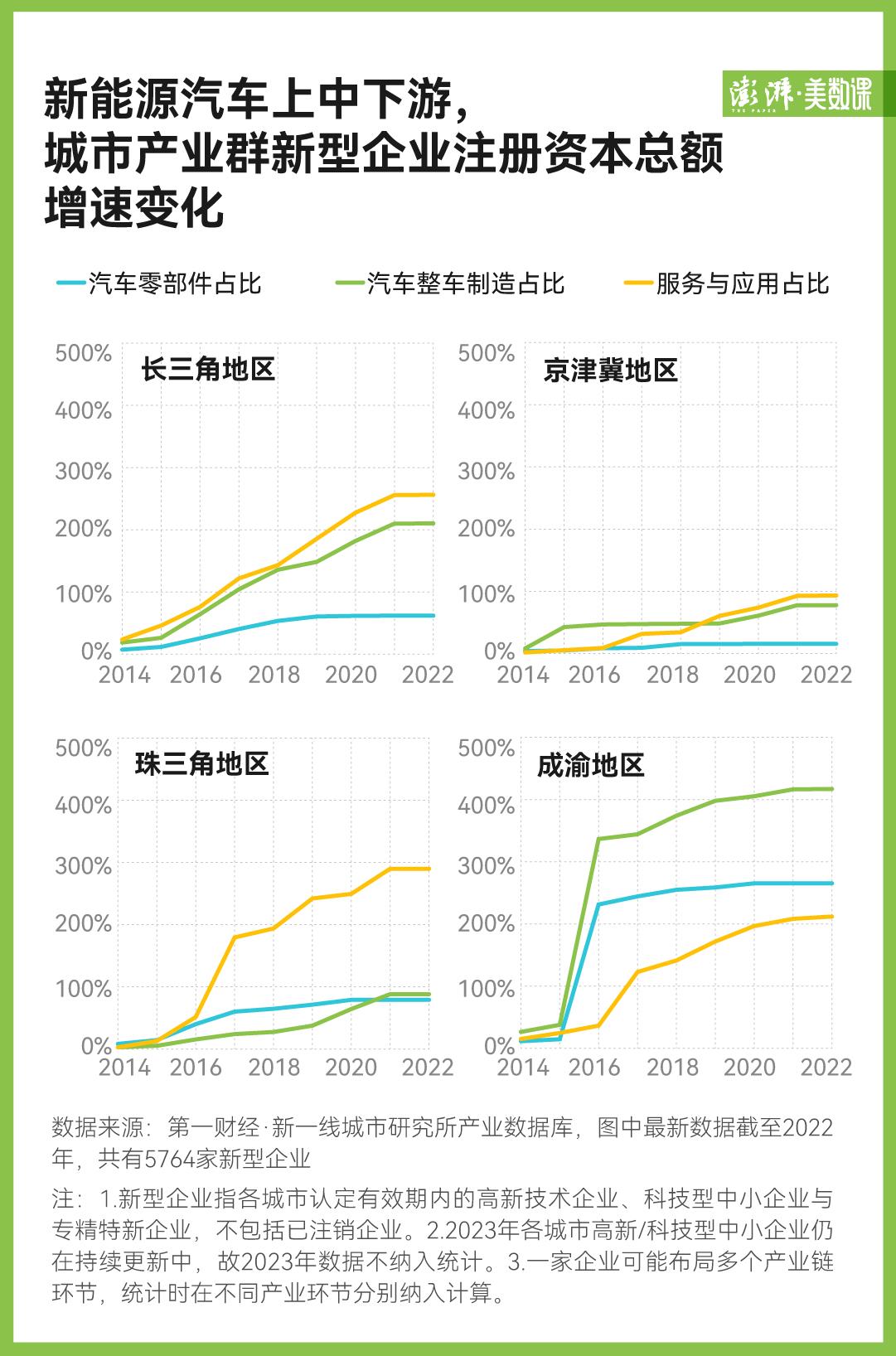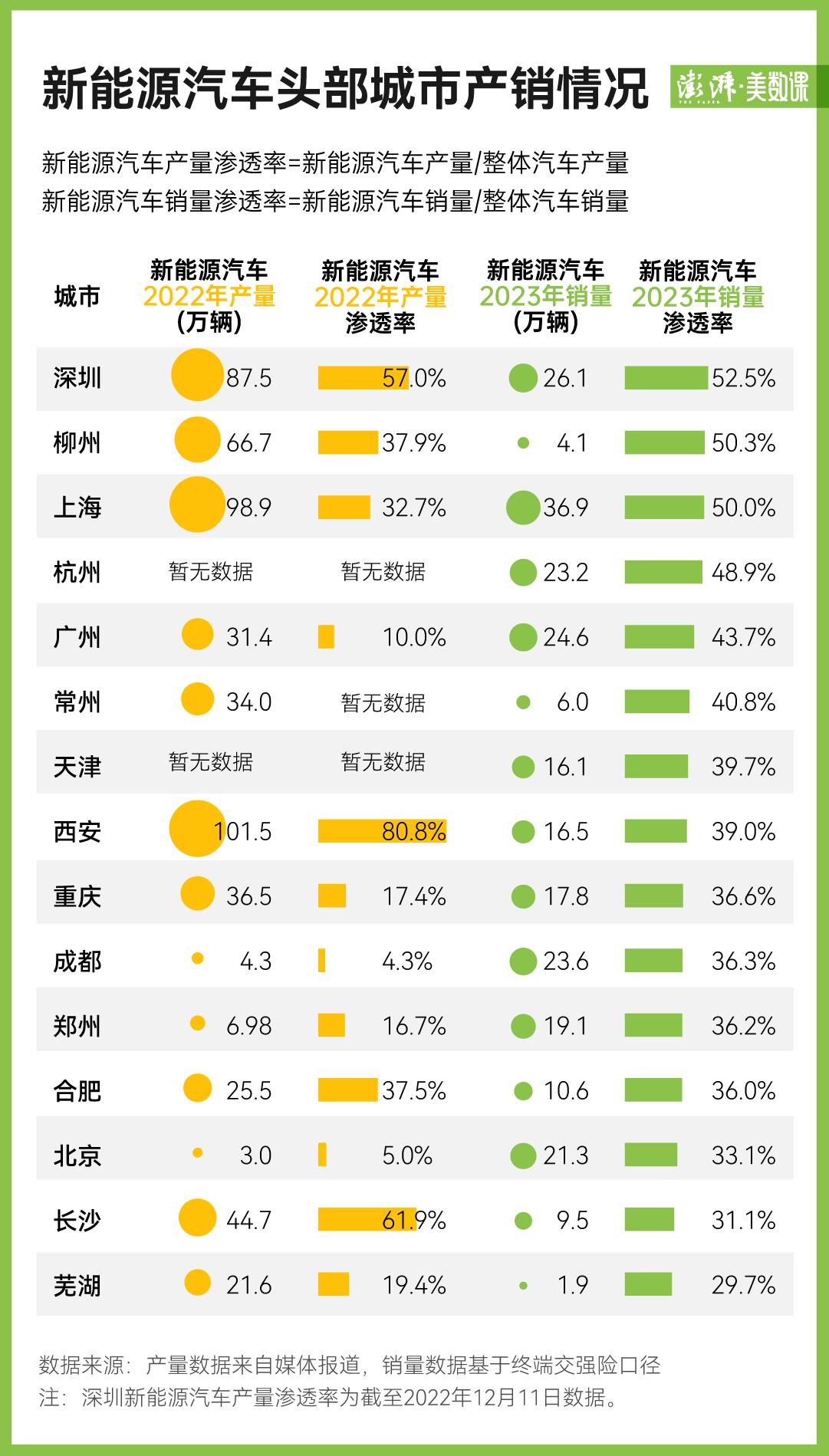There are more and more green cars on the road.
Take Shanghai as an example. In 2023, the number of new energy vehicles in the city reached 1.288 million, ranking first in the world. In 2016, this number just exceeded 100,000, an increase of nearly 12 times in seven years.
Counting the history, it has been ten years since the first round of explosive growth of new energy vehicles in 2014.
In 2014, stimulated by the intensive subsidy policies of the central government and local governments, the demand for new energy vehicles was greatly released, which ushered in both production and sales. According to the statistics of China Automobile Association, in 2014, 78,499 new energy vehicles were produced and 74,763 vehicles were sold, up 3.5 times and 3.2 times respectively over the previous year.
The development of new energy vehicles has also brought economic benefits to their cities.In the past ten years, countless cities have come to an end. More than 10 cities, including Shanghai, Chongqing, Shenzhen and Xi ‘an, have set the goal of building a "new energy automobile capital", hoping to get this big cake first.

So in the past ten years, which cities have successfully embarked on their own development path of new energy vehicles? Based on corporate big data, we sketched out a ten-year urban competition record.
Ten Years of Enterprise Big Data: Counting Four Major Urban Industrial Clusters
To build a new energy automobile industry, one of the most important goals is to form industrial agglomeration, so as to achieve scale effect. We selected four major urban agglomerations with the largest concentration in China’s new energy vehicle industry, and further analyzed 62 cities in the Yangtze River Delta region, Pearl River Delta region, Beijing-Tianjin-Hebei region and Chengdu-Chongqing region.

According to the industrial database of CBN New First-tier City Research Institute, from the latest data of new enterprises such as "high-tech enterprises", "small and medium-sized scientific enterprises" and "specialized and special new enterprises",By 2022, there were 5,764 new enterprises related to new energy vehicles in the four industrial zones.
Based on the industry classification algorithm, the database matches enterprises to all segments of the new energy automobile industry chain, in which enterprises can be matched to three major industries according to the upstream, downstream and downstream: auto parts, vehicle manufacturing and service and application.
In order to better compare the different development directions of cities in the three major industries, we calculated the median of "total registered capital of new energy vehicle enterprises" in 62 cities in the three major industries, which were 947 million yuan, 297 million yuan and 735 million yuan respectively. When we calculate and compare the total registered capital of the three major industries in each city, we can see the industrial distribution characteristics of each city, thus calculating the main industries in the direction of new energy vehicles. For example, the total registered capital of new-type enterprises of "service and application" in Shanghai is 11.561 billion yuan, which is 16 times of the above median; However, the total registered capital of new enterprises related to "auto parts" and "vehicle manufacturing" in Shanghai is only 12 times and 13 times of the above median. Therefore, "service and application" can be considered as the main industry of new energy vehicles in Shanghai.
In order to compare cities better, we spread these data on the map. The main industries in each city are distinguished by different colors, and the total registered capital of emerging enterprises is represented by the size of a circle. It can be found that,The Yangtze River Delta urban agglomeration has more cities with new energy vehicles, and its geographical coverage is also wider.
In addition, among the 62 cities, 25 cities are mainly located in the downstream service and application industries, including Guangzhou, Shanghai, Shenzhen and Chengdu, with the largest number of cities. The main industries in 17 cities are the upstream auto parts industry, including Zhenjiang, Yangzhou and Taizhou. The main industries in 20 cities are the automobile manufacturing industry in the middle reaches, including Beijing, Tianjin and Changzhou.
Then if we add the time dimension, what about the changes of industrial clusters in four major cities from the span of ten years?
We calculated the annual growth rate of the number of new enterprises in industrial clusters in cities compared with 2013, and found that,"Automobile Manufacturing" and "Service and Application" located in the middle and lower reaches of the industrial chain have always been the development focus of the Yangtze River Delta region and Beijing-Tianjin-Hebei region in recent ten years. Comparatively speaking, the Pearl River Delta region has made greater efforts to develop the service and application industries, while Chengdu-Chongqing region has made greater efforts in the vehicle manufacturing industry.

The battle for "the capital of new energy vehicles": Who will end up? Who won?
In the battle for new energy automobile cities, cities have tried their best: some cities have made great efforts to develop with the help of their huge consumer market; Some cities actively promote industrial transformation and upgrading based on local industrial characteristics; Some cities tap the advantages of resources to attract investment.
So which cities won in this competition? Where did you win again? Judging from the available public data,Among the top cities of new energy vehicles, the top three are Xi ‘an, Changsha and Shenzhen, and the top three are Shenzhen, Liuzhou and Shanghai.

Capital never sleeps. In the face of new economic growth points full of infinite possibilities, in the past ten years, the new energy vehicle market has been surging, and many cities have also made efforts to compete for the "capital of new energy vehicles", and the industrial battle has continued to start. We look forward to the future new energy automobile industry, adhering to the concept of innovation and sustainability, and developing healthily and vigorously.